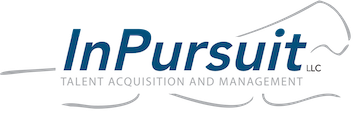The Future Workforce Series – Talent Acquisition – 3 of 6
Our introduction to this series outlined the bittersweet reality of the changes taking place in the workforce and the pressing need for serious deliberation on what that means for recruiting and retention. Our second blog discussed critical issues with supply and demand. Now, more than ever, employers need a highly strategic plan for effective talent acquisition.
The last 15 months gave employees plenty of time while working from home to draw conclusions about their best future. They developed preferences around work style, flexibility and commutes, and they are better equipped to pursue a work schedule and environment that generate inspiration and creative opportunity.
A shift has taken place.
In this blog, we’ll discuss the status of the talent pool and how to understand and accommodate their needs. As an employer, your need to attract the best talent requires a solid game plan if you are to remain competitive and moving forward.
Yes, the workforce is changing, and the time to prepare is now. Waiting is not a viable option. We are seeing a much higher percentage of employees ready to consider a new position and make a move. Many of them have adjusted to working from home and created a working lifestyle that they much prefer to the old standard.
Employees who have the drive and ambition to excel in the workplace now understand that they can be highly successful and productive without adhering to an 8- 5 in-office routine. The former practice of being seen eight hours a day, meeting in person and gathering around the water cooler no longer holds appeal for the majority of workers.
Employers have realized the truth of this scenario as well. In cases where workers do not need to be physically present for production or customer service, they can be even more creative and productive than when on the premises under a watchful eye.
Technology has enabled changes.
Technology has played an impressive role in offering employees more flexibility and freedom on the job. With available connectivity, they can readily access the data and resources needed to be successful. At the same time, it also allows them to actively network and increase their opportunities in the marketplace. They’ve been given access to the pulse of the job market and finding options for their advancing objectives.
With technical flexibility at their fingertips, employees had more choices on how to manage their personal life and family schedules. Forward-thinking leaders will leverage technology for effective communication channels that can bind the group together without the physical restrictions of the past.
There’s wisdom in leveraging communication.
While communication has always been important, it is now more critical than ever. This is a point not to be missed. Clear channels of communication will make a significant difference for thriving managers, employees and teams. Not only do these channels need to be open, but they need to be used regularly.
Especially when employees are not on site, managers need to touch base more often to give encouragement, build the team and bridge the gap of miscommunication. This doesn’t mean micro-management. Rather, this means empowering capable, motivated employees to drive results.
With training, managers will learn how to build a cohesive team and lead with confidence within the new norm. Policies and procedures must underscore the benefits of technology and communication as an organization so everyone remains on the same page.
Who is competing more effectively?
To compete for this pool of resourceful talent, employers must clearly understand that employees have options. They are fully aware that they possess the ability to secure a position that complements their professional and personal goals. How can your organization address employee needs while competing in the marketplace?
The InPursuit Search Solution
Companies that fare the best will be those that take the time to understand the new workforce and address their needs through policies and procedures. They will use employee engagement surveys as a Voice of Employee tool to ensure that those needs are being met and that everyone shares the vision and works toward it collectively.
To compete successfully, tweak your policies and procedures. Your communication and internal training with executives, line managers and employees will define your targeted workforce and what motivates them.
Hiring strategy must include thorough research of external candidates. Until you know what drives them, you can’t ensure a good fit for the culture and mission. To make an attractive offer, you need to know more than their experience history and skills. You must uncover what is most meaningful to them on both a personal and professional level.
Equally as important is the knowledge of the marketplace. What other opportunities are on the horizon for them? To better understand candidates within the talent acquisition process, you need to be aware of other opportunities they may be seeking. Once you know what you are up against, you can close the offer process.
If you have comments about this topic and would enjoy a conversation, call David Zimmel at InPursuit Search: 612-810-0406. And if you have a friend who would benefit from the discussion, please share the blog with them. Thank you!
InPursuit Retained Search: www.inpursuitsearch.com


Write a Comment